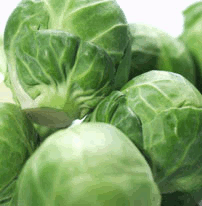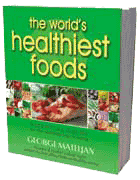- Optimizing Your Cells' Detoxification/Cleansing Ability
- How Does the Process of Detoxification/Cleansing Work in Our Bodies?
How Does the Process of Detoxification / Cleansing Work in Our Bodies?
To appreciate the complex dance of health performed by the active constituents in whole foods, a brief overview of the process through which our bodies detoxify or cleanse harmful compounds can be helpful:
Detoxification / Cleansing involves three primary steps, which have been labeled Phase I, II and III.
Phase I is composed of the cytochrome P450 family of enzymes. Although the CYP450s can fully detoxify a few toxins, almost always they only alter toxic compounds slightly, adding a molecule that makes the toxin even more reactive and dangerous, but also serves as a beacon to attract the enzymes involved in Phase II.
Phase II enzymes further change the activated toxin, joining it to other compounds that render it ready for elimination by making it water-soluble.
Phase III proteins, which sit in the external membranes of our cells, then push (efflux) the now water-soluble toxins and cell wastes out of the cell into blood for elimination in the urine, or into the bile for elimination in the feces.
A key point here is that healthy detoxification requires balance among Phases I, II and III.
The Phase I enzymes create compounds that are potentially even more harmful than the original toxin. So, when the activity of these CYP450s is increased, so is the potential for damage-unless the activity of the Phase II enzymes is also increased, so they can promptly process these intermediate products. And finally, the Phase III enzymes must be ready and able to push the resulting water-soluble garbage out of the cell.
Imbalanced detoxification-an upregulated Phase I and downregulated or overloaded Phase II or Phase III-results in the accumulation of highly reactive toxins and garbage inside our cells, a nasty situation that can promote cancer.
Research is now showing that combinations of phytonutrients naturally found in whole foods, particularly the cruciferous vegetables, both increase and balance the activity of Phase I, II and III enzymes. Here are just a few examples of how they work:
Phytonutrients in crucifers trigger the activity of gene response elements. We now know that genes are not activated singly, but in families, each of which is controlled by a gene response element. A gene response element is a very small group of DNA bases that acts like the foreman in a factory and controls the going-to-work of whole crews of genes that then direct the production of proteins needed for various functions, one of which is detoxification. Gene response elements contain information that ensures all the necessary proteins will be made to effectively coordinate and balance detoxification. Phytonutrients in crucifers signal these gene response elements, which then activate the genes needed to produce all the necessary Phase I, II, and III enzymes.
Sulforaphane, a phytonutrient produced when broccoli is cut or chewed, is a good example. Once inside the cell, sulforaphane finds a transcription factor called nrf2, which is bound tightly to a protein called Keap1. Sulforaphane breaks the bond, freeing nrf2, which then travels into the cell's nucleus and binds to a gene response element called the antioxidant response element (ARE). As its name suggests, the antioxidant response element turns on a whole team of genes that produce proteins with antioxidant and balanced cleansing activities.
In addition to sulforaphane, crucifers provide other phytonutrients including crambene and phenylethyl isothiocyanate (PEITC). I3C upregulates Phase I; crambene and isothiocyanates upregulate Phase II. And these compounds enhance each other's beneficial effects. In one study, treatment with a combination of crambene and I3C almost doubled the increase in Phase II enzyme production seen with either compound alone. Of course, broccoli and other crucifers provide this combination naturally.
Indole-3-carbinol (I3C), another phytonutrient in cruciferous vegetables, is metabolized to a variety of cancer-preventive compounds, including diindolylmethane (DIM). I3C induces Phase I and Phase II enzymes that clear carcinogens, enhances repair of damaged DNA by affecting several of the proteins involved in the repair process, and triggers cancer cell cycle arrest and suicide. In addition, both I3C and DIM increase the 2-hydroxylation of estrogens, a process that changes estrogen into a form in which it can no longer promote cancer.
I3C also prevents estrogen from promoting cancer by significantly increasing the production of another benign form of estrogen called the 4-catechol-estrogens. In this form, estrogen can be methylated to form methoxyestrogens (when good supplies of vitamins B6, B12 and folate are around), which also pose no risk for cancer.
While the biochemical steps our bodies follow to cleanse our cells of potentially harmful compounds are quite complex, the bottom line is blessedly simple:
To boost your body's detoxification/cleansing ability, enjoy at least 3 servings each week of cruciferous vegetables, such as broccoli, Brussels sprouts, cabbage, cauliflower and kale.
- Bell MC, Crowley-Nowick P, et al. Placebo-controlled trial of indole-3-carbinol in the treatment of CIN. Gynecol Oncol. 2000 Aug;78(2):123-9. 2000. PMID:10926790.
- Bland J.S. Mechanisms of metabolism. Lecture presented at the 13th International Symposium on Functional Medicine: Managing Biotransformation: The Metabolic, Genomic and Detoxification Balance Points, sponsored by the Institute for Functional Medicine, www.functionalmedicine.org, April 19-22, 2006, Tampa, FL. 2006.
- Bland, JS. Pharmacogenomics and the coming of personalized medicine. Lecture presented at the 13th International Symposium on Functional Medicine: Managing Biotransformation: The Metabolic, Genomic and Detoxification Balance Points, sponsored by the Institute for Functional Medicine, www.functionalmedicine.org, April 19-22, 2006, Tampa, FL. 2006.
- Cohen JH, Kristal AR, et al. Fruit and vegetable intakes and prostate cancer risk. J Natl Cancer Inst. 2000 Jan 5;92(1):61-8. 2000. PMID:10620635.
- Jeffery, E. Detoxification basics. Lecture presented at the 13th International Symposium on Functional Medicine: Managing Biotransformation: The Metabolic, Genomic and Detoxification Balance Points, sponsored by the Institute for Functional Medicine, www.functionalmedicine.org, April 19-22, 2006, Tampa, FL. 2006.
- Jeffrey E. Diet and detoxification enzymes. Lecture presented at the 13th International Symposium on Functional Medicine: Managing Biotransformation: The Metabolic, Genomic and Detoxification Balance Points, sponsored by the Institute for Functional Medicine, www.functionalmedicine.org, April 19-22, 2006, Tampa, FL. 2006.
- Murray M. Altered CYP expression and function in response to dietary factors: potential roles in disease pathogenesis. Curr Drug Metab. 2006 Jan;7(1):67-81. 2006. PMID:16454693.
- Nho CW, Jeffery E. The synergistic upregulation of phase II detoxification enzymes by glucosinolate breakdown products in cruciferous vegetables. Toxicol Appl Pharmacol. 2001 Jul 15;174(2):146-52. 2001. PMID:11446830.
- Nho CW, Jeffery E. Crambene, a bioactive nitrile derived from glucosinolate hydrolysis, acts via the antioxidant response element to upregulate quinone reductase alone or synergistically with indole-3-carbinol. Toxicol Appl Pharmacol. 2004 Jul 1;198(1):40-8. 2004. PMID:15207647.
- Rogan E. The natural chemopreventive compound indole-3-carbinol (I3C): state of science. In Vivo. 2006 Mar-Apr;20(2):221-8. 2006. PMID:16634522.
- Voorrips LE, Goldbohm RA, et al. Vegetable and fruit consumption and risks of colon and rectal cancer in a prospective cohort study: The Netherlands Cohort Study on Diet and Cancer. Am J Epidemiol. 2000 Dec 1;152(11):1081-92. 2000. PMID:11117618.
- Zhao B, Seow A, et al. Dietary isothiocyanates, glutathione S-transferase -M1, -T1 polymorphisms and lung cancer risk among Chinese women in Singapore. Cancer Epidemiol Biomarkers Prev. 2001 Oct;10(10):1063-7. 2001. PMID:11588132.






